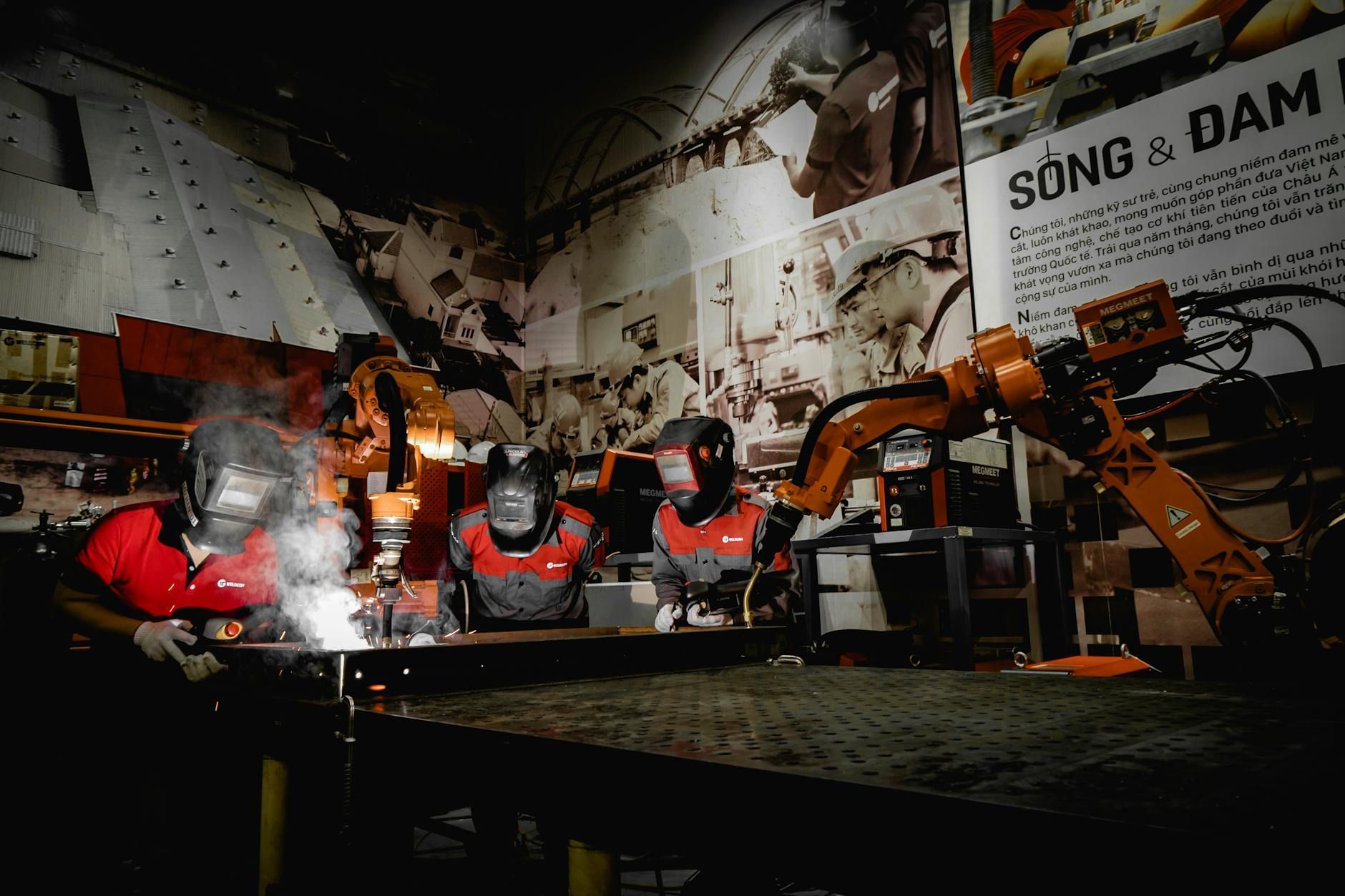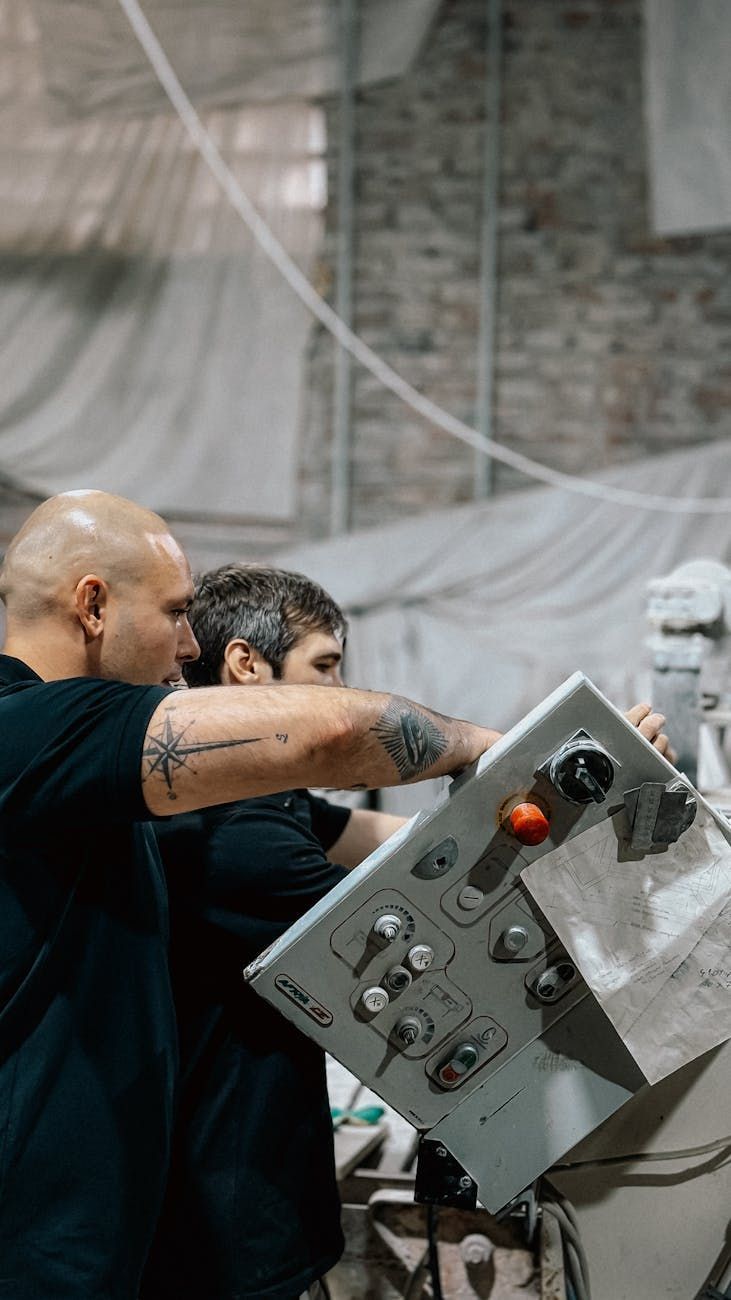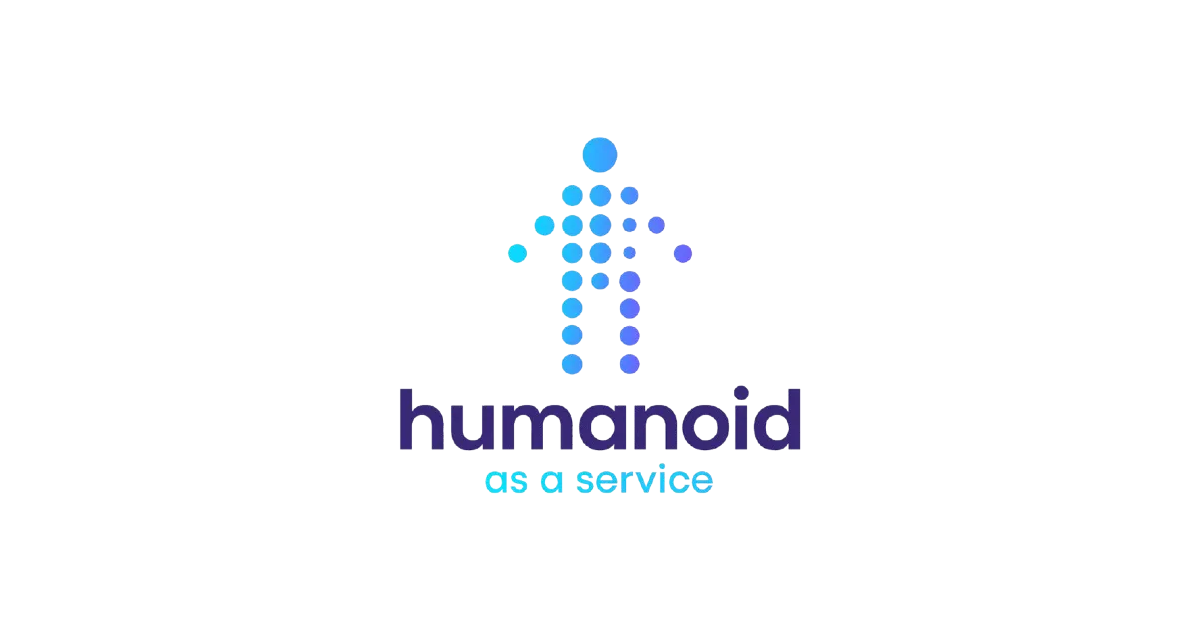Strong Wealth Solutions
Why You Should Embrace Robotic Process Automation Now
You’re probably hearing about robotic process automation everywhere these days. It’s the technology that promises to handle tedious tasks, speed up your operations, and let your team focus on more strategic work. Sound too good to be true? Stick around. In this ultimate guide, you’ll see why forward-thinking executives and business leaders (like you) are already taking advantage of automation tools that free up human potential in a big way.
Before we dive in, here’s the quick takeaway: robotic process automation frees you from repetitive, rules-based workflows so you can direct your energy toward innovation. This transformation goes beyond fancy software. It’s a major cultural shift in how you view work, efficiency, and growth. Ready to learn more? Let’s get started.
Discover robotic process automation
Robotic process automation, often shortened to RPA, is a system that imitates human actions to execute recurring tasks. It typically involves bots—software robots trained to capture data, fill in forms, or drive entire processes from beginning to end. The impact can be immediate. Picture the hours saved on mundane tasks like data entry, invoice generation, or basic customer support interactions.
You might be wondering how RPA differs from other automation in the workplace. Traditional workflow automation tools usually require code changes or major system overhauls. RPA, on the other hand, sits on top of existing platforms. It interacts with software the same way a human would—by clicking, copying, pasting, or typing. That means streamlined adoption without massive disruption.
Implementation examples range from automating your employee onboarding process to improving human-robot collaboration. Imagine programs that open attachments, flag the relevant details, and then fill out reports in seconds. Whether you’re dealing with thousands of monthly invoices or just want fewer manual steps in your HR system, RPA adapts to your needs.
There’s also more to it than a few bots automating tasks. RPA can integrate with AI-driven intelligence. Chatbots, machine learning models, and advanced analytics can all align with your larger digital strategy, making your entire operation more cohesive. By letting software handle predictable work, you free up your workforce for creative problem-solving.
So why does this matter to you? At its core, robotic process automation stretches your resources without exhausting your people. If you’ve dreamed of a more efficient and less error-prone operation, RPA is your next big step.
Explore core benefits
You likely know that technology solutions should bring tangible perks. RPA does that by enhancing productivity, accuracy, and scalability. When your employees aren’t stuck in the weeds of repetitive tasks, they have the bandwidth to innovate. Let’s unpack a few core benefits:
- Improved accuracy
- Humans make mistakes, especially when they’re rushed or bored. RPA bots don’t get bored, and they follow rules precisely.
- Less error-checking means you can trust your data more, boost customer satisfaction, and shrink your risk.
- Faster turnaround
- Tasks that used to take days, like manually processing large data sets, can be completed in hours or minutes.
- Your team can run more initiatives in parallel without losing momentum.
- Scalable workforce automation
- As demand fluctuates, you deploy more bots without the need for extra full-time hires.
- Seasonal spikes or unexpected workloads become significantly easier to handle.
- Higher employee satisfaction
- When repetitive work is offloaded, your employees can focus on their core expertise.
- This shift boosts morale and encourages people to stay engaged in higher-level tasks.
- Cost reduction
- Fewer manual processes mean reduced overhead.
- You can repurpose staff time, cut down on contractor expenses, and eliminate bottlenecks.
Keeping these benefits in mind, it’s no surprise that automation in the workplace is rising fast. A well-run RPA program offers a mix of speed, precision, and adaptability. Think of it as extending your human potential. Instead of drowning in data, you leverage a digital ally to do the heavy lifting while you guide the strategic direction.
Yes, investing in new technology can feel daunting. But weigh the ongoing price of manual rework and compliance headaches. You might see that RPA pays off far quicker than you expect. By implementing a structured plan from day one, you set yourself up to capture these benefits without massive friction.
Address common misconceptions
If automation is so great, why does skepticism still lurk around the boardroom table? Chances are, you’ve heard myths claiming RPA is only for huge enterprises or that it will chew up everyone’s jobs. Let’s bust those misconceptions to give you an accurate picture.
- “We’re too small for RPA”
- RPA fits organizations of all sizes. Whether you run a multi-department enterprise or a nimble startup, you likely have repetitive tasks that drag down productivity.
- You don’t need complex or custom systems. Bots can be configured for cloud software, legacy mainframes, or any mix in between.
- “Robots will replace humans”
- In reality, RPA is about workforce automation benefits that augment human roles. You still need people for judgment, creativity, and adaptability.
- The bots handle the dull, recurring tasks so you can refocus staff on strategic, high-value initiatives.
- “It’s too complicated to deploy”
- With modern RPA platforms, low-code or no-code solutions are common.
- Business users can often create simple bots themselves, and any complex situations can be handled by IT or external experts.
- “We’ll lose control over processes”
- RPA actually lets you gain more visibility. You can track each bot’s actions, create audit trails, and quickly pinpoint any anomalies.
- Adjusting a bot’s workflow often takes less time than retraining staff.
- “It’s only for finance and HR”
- While finance and HR indeed benefit from RPA, plenty of other operations (manufacturing, logistics, customer service) also rely on routine tasks that can be automated.
- The best approach is to audit where staff time goes. You’ll likely spot inefficiencies in many different departments.
Don’t let these misconceptions keep you from exploring RPA. The real question is how to roll out automation in a way that supports, rather than replaces, your workforce. In most cases, RPA is a complementary asset that fits well with your existing teams and technology environment.
Examine real-world use cases
Nothing cements the value of robotic process automation quite like actual examples. Every industry has its own compliance demands, time constraints, and data workflows. Wherever tasks are repetitive, there’s a potential RPA solution.
Here are a few scenarios where RPA often shines:
- Invoice handling and accounts payable
- Automating invoice capture, data entry, and payment validation drastically speeds up processing and reduces errors.
- This approach is especially powerful if you manage a large supplier network.
- Customer onboarding
- Banks, insurance companies, or subscription providers can use bots to gather client data across multiple forms, verify identities, and open new accounts.
- This consistency helps you meet know-your-customer (KYC) and other compliance norms without a backlog of paperwork.
- HR administration
- Onboarding new hires can involve countless forms, policy documents, and benefits enrollment tasks.
- A well-deployed bot can handle the routine steps so your HR pros spend more time on culture-building and strategic recruitment.
- Inventory management
- In manufacturing or retail, everyday tasks like updating stock levels, verifying shipping details, or generating purchase orders can be automated.
- This helps keep a clean, accurate inventory, which flows into better demand forecasting.
- IT support automation
- Password resets, system access requests, and other ticket-based tasks quickly pile up.
- With RPA, an automated workflow can handle repetitive queries, freeing your IT staff to concentrate on more complex challenges.
In many of these cases, RPA plugs seamlessly into your existing software environment. You can find specialized workforce automation tools that handle these everyday workflows. With the right planning, it’s possible to solve multiple pain points at once. Each department might have its own RPA projects, but a unified approach ensures that you stay consistent and cost-effective across the organization.
Formulate your RPA strategy
Where do you begin if you’re sold on the idea of robotic process automation? Start by doing a thorough assessment of your current processes. Pinpoint tasks that are predictable, repetitive, and easily documented. These tasks often involve multiple steps—think data entry, copying information from one system to another, or sending out a batch of routine emails.
Next, you’ll want to:
- Identify stakeholders
- Include people from across teams, such as operations, IT, and departmental managers.
- This cross-functional approach ensures you hear varied perspectives on what needs automating first.
- Set measurable goals
- Are you aiming to shorten turnaround times, reduce error rates, or reallocate staff to strategic roles?
- Clear metrics help you gauge success once you go live.
- Choose your tools
- Research RPA platforms with user-friendly interfaces and robust support communities.
- Evaluate the level of integration possible with your current technology stack. Tools that have quick connectors to popular enterprise software are a big plus.
- Map out priorities
- In selecting processes for automation, start with the tasks that bring swift ROI.
- Use a priority matrix that balances the complexity of automating a task with the impact it will deliver. The sweet spot is high-impact, relatively low-complexity processes.
Throughout this scoping phase, keep an eye on how RPA will fit into your broader digital strategy. Many companies layer workforce automation software on other advanced tools, upgrading to AI-driven analytics that handle more nuanced work. You don’t want to implement RPA in a silo. Collaboration with existing systems ensures a stable and scalable foundation.
When done right, strategic planning means you only automate what truly needs automating. The goal isn’t to automate every single process but to identify the tasks that unlock the biggest improvements first. Minimizing disruption in the early stages builds trust and momentum for more advanced phases.
Integrate with existing workflows
One fear is that new tech might uproot the entire workflow setup. The beauty of robotic process automation is that it typically meshes well with your current environment. Because RPA mimics human actions, it can sit on top of both modern cloud applications and outdated legacy software. That alone saves you from re-engineering your entire infrastructure.
How do you ensure a smooth integration?
- Start with a pilot
- Automate one or two specific processes.
- Gather feedback from the people interacting with those processes daily. Did the bots execute correctly? Did they cause unexpected delays?
- Document everything
- Process documentation is crucial, but it’s often overlooked.
- An updated and thorough process map helps you adjust quickly if something goes off track.
- Prepare for exceptions
- Not every scenario fits neatly into an automated flow.
- Build in fail-safes or manual review steps. For instance, if a bot encounters a missing data field or an unusual invoice amount, it flags a human to intervene.
- Train your people
- Walk your staff through how RPA works, what it does, and what it doesn’t do.
- If you can empower a few “citizen developers” (non-technical employees trained to create simple automations), you reduce reliance on IT for every tiny change.
- Communicate constantly
- Always share updates on which workflows are being automated, what changes to expect, and who to contact for issues.
- A transparent approach builds buy-in and wards off confusion.
Integration is also where you’ll see how RPA plays nicely with your enterprise resource planning (ERP) tools, CRM platforms, or industry-specific software. Many RPA solutions are designed to handle these interactions seamlessly. Over time, you can start layering additional capabilities like advanced analytics or workforce automation solutions to gain deeper insights into process efficiency.
Monitor progress and refine
Rolling out RPA isn’t a one-and-done affair. Like any strategic initiative, you’ll want to track results and adjust as your business grows. The goal: keep improving processes and avoid letting bot workflows become stale.
What should you monitor?
-
Bot performance metrics
-
Track how many transactions each bot completes per hour or day.
-
Watch error rates to spot any recurring hiccups.
-
Compliance and security
-
Verify that your automations follow data handling regulations and security standards.
-
If new compliance rules appear, you’ll need to tweak your bots accordingly.
-
Cost savings
-
Compare your pre-RPA and post-RPA spending on time, labor, or outsourcing.
-
These metrics show top-line savings and can justify expansions or new automations.
-
Human feedback
-
Ask your teams which processes became smoother and which still feel cumbersome.
-
Because staff interact with the system daily, they have the best vantage point to propose improvements.
This continuous improvement cycle positions your organization to scale RPA across multiple departments. If you see that your invoice processing bots are meeting goals faster than expected, you might want to adapt the workflow for accounts receivable or other finance tasks. By establishing a feedback loop, you spot issues quickly, celebrate the wins, and maintain a culture of learning.
Companies that succeed with large-scale automations also keep measuring intangible benefits, like employee satisfaction. Less burnout from data drudgery means people have the mental space for creativity. RPA is often a force multiplier in fields like marketing, product development, or strategic planning—you free your best minds to do what they do best.
Picture the future ahead
As more organizations adopt software robots, you’ll see new roles and possibilities emerge in the workforce. The combination of AI, robotics, and advanced analytics is changing how people collaborate across departments. For example, chatbots powered by machine learning might respond to customer queries and pass only the trickiest problems to human agents. This synergy aligns nicely with impact of ai on workforce , where man and machine coexist to boost overall output.
Don’t be surprised if you see new job titles like “RPA controller” or “automation champion.” Far from eliminating jobs, RPA is molding them into roles that need more supervision, problem-solving, and creativity. Over time, your employees will guide and refine the bots, ensuring your organization remains nimble in the face of market changes.
You might also explore workforce automation trends to stay ahead of emerging technologies. Already, companies are experimenting with hyperautomation—the combination of RPA, AI, process mining, and other advanced tools that tackle increasingly complex tasks. While you don’t need to jump into everything at once, being aware of these trends helps you plan future expansions wisely.
And let’s not forget the big picture: a growing focus on innovation, speed, and data-driven decisions. By letting bots handle the busywork, your teams can discover new opportunities—maybe a new product line, an underserved customer segment, or a strategic partnership waiting to happen. Shortly, you’ll see how your organization can leverage this transformation across multiple fronts: cost reduction, revenue growth, and employee satisfaction.
Take the next step
At this point, you understand not just what robotic process automation is, but how it fits into your broader vision for a more efficient and future-proof organization. The next step is simple: put your plans into action. Whether that means identifying a pilot project, reaching out to a vendor, or inspiring your internal tech team to build a few bots, you have the knowledge to proceed confidently.
If you’d like expert guidance, Humanoid as a Service (HaaS) can help. We specialize in bringing workforce automation technologies to life, so your business can see fast returns. Looking for immediate insights on how you could integrate or scale automation? Book a free consultation or get started here: https://www.humanoidasaservice.com/get-started
Below are some final tips to keep in mind:
-
Automate carefully
Don’t attempt to automate every single thing at once. Stay focused on high-impact tasks that directly influence productivity or revenue. -
Maintain oversight
Regular monitoring keeps your bots accountable and ensures their outputs remain accurate. Create clear governance protocols to manage changes or disruptions. -
Keep a learning mindset
Technology evolves, and so will your automation strategy. Read up on new RPA updates, attend conferences, and watch for software improvements. -
Support teamwork
Encourage open dialogue with employees. Ask for feedback, share success stories, and remind them that RPA is here to relieve busywork, not replace people.
By embracing robotic process automation now, you give your company a competitive advantage. You’ll free employees to tackle higher-value projects, amplify the power of human decision-making, and steer your organization toward a future where growth and innovation are the norms.
SHARE THIS POST:
Leave A Comments:
Our Recent Posts:
Transform Your Workforce
Experience the future of work today. Book a pilot project or demo to see how humanoid automation can elevate your operations.








